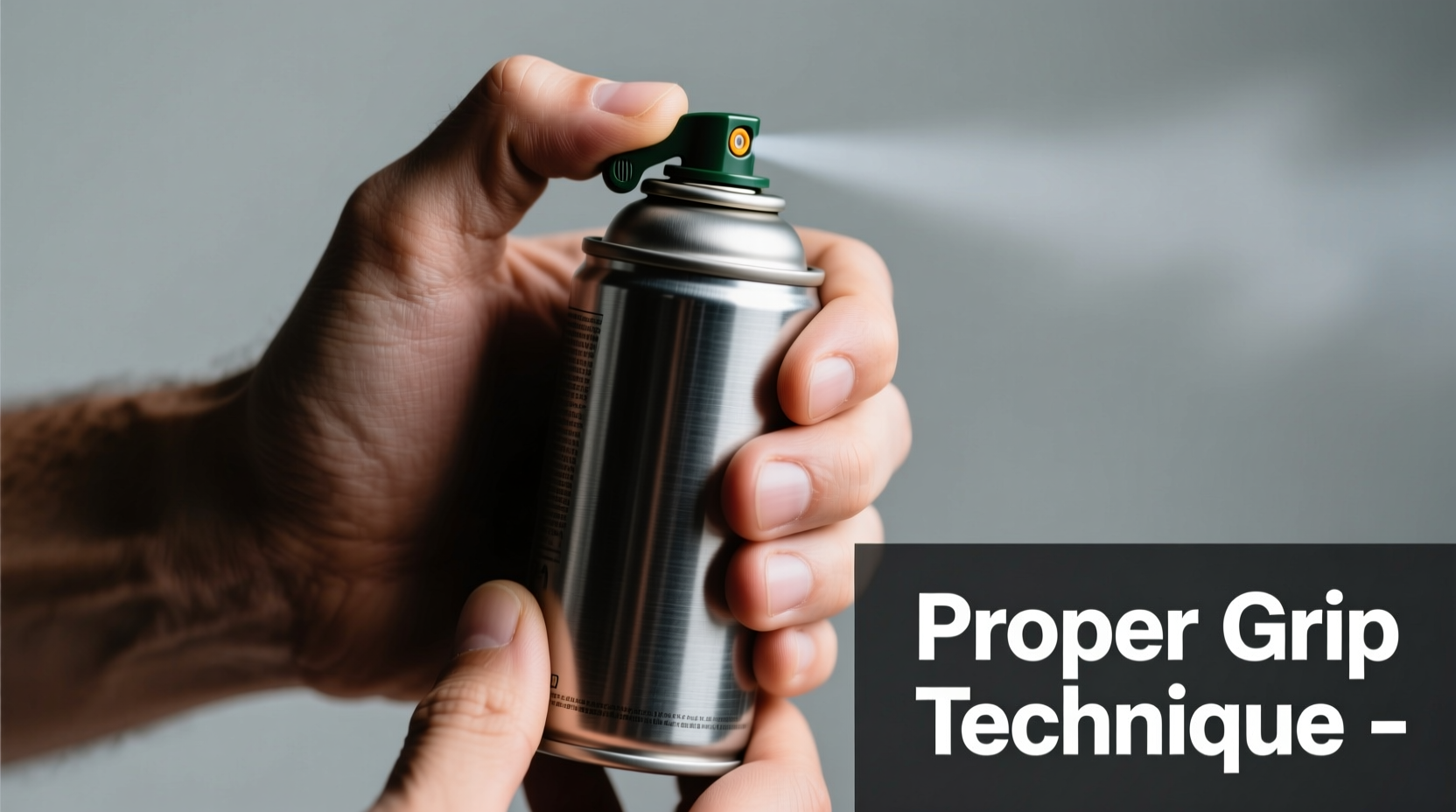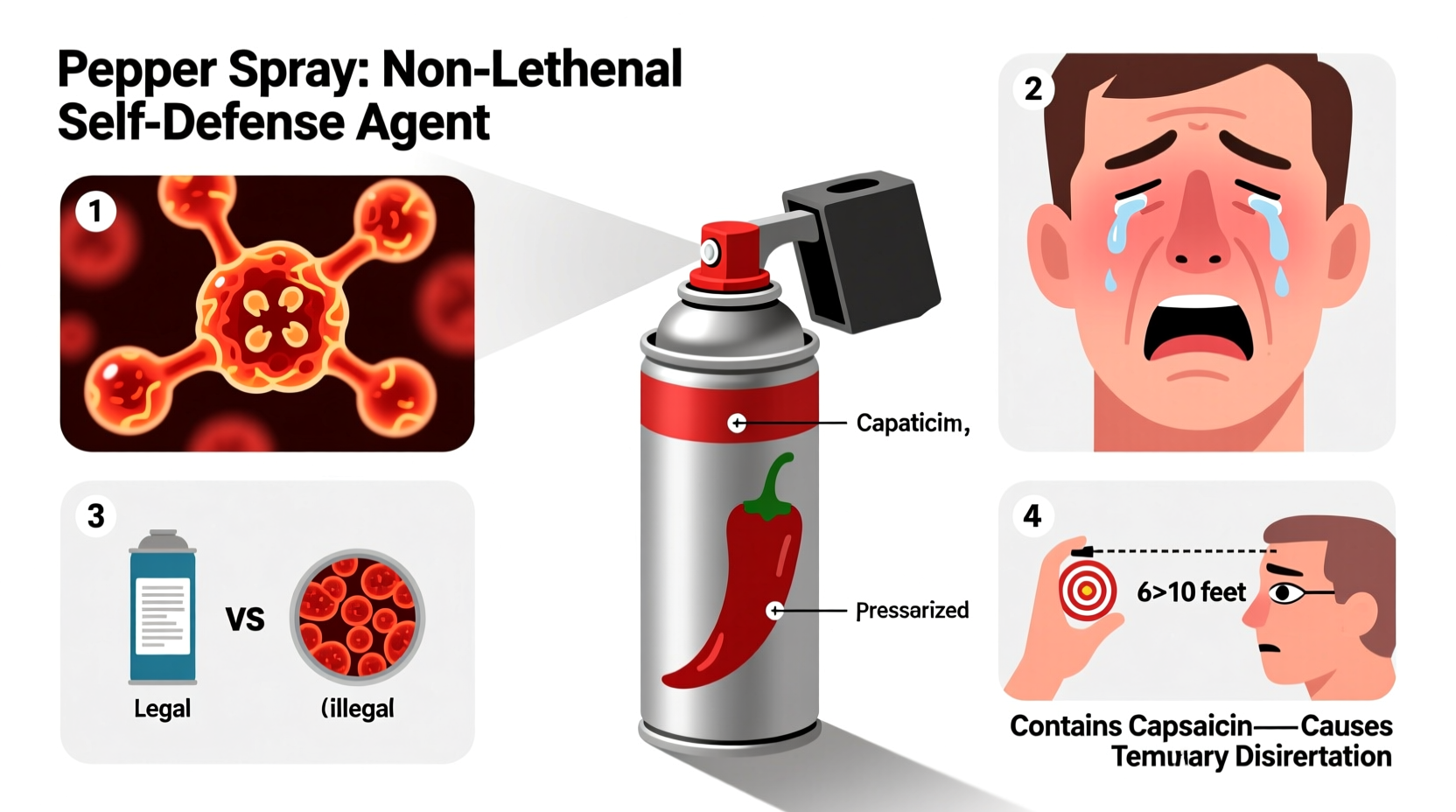Understanding Pepper Spray: Your Complete Safety Guide
When seconds count in a dangerous situation, pepper spray provides a critical non-lethal defense option. This guide delivers essential, verified information about how pepper spray works, its legal status across jurisdictions, and proper usage techniques to maximize your safety.
What Exactly Is Pepper Spray Made Of?
Pepper spray's active ingredient comes from capsicum annuum plants, specifically the capsaicinoids that create heat in chili peppers. Unlike culinary peppers measured in Scoville Heat Units (SHU), defense sprays use Oleoresin Capsicum (OC) concentration measured as a percentage:
- 0.18%-0.3% OC - Standard consumer strength (comparable to 2-5 million SHU)
- 1.0%-2.0% OC - Law enforcement grade (10-15 million SHU)
- Up to 3.0% OC - Maximum concentration available
According to the CDC's National Institute for Occupational Safety and Health, OC concentrations above 2% provide diminishing returns while increasing risk of respiratory complications.
How Pepper Spray Works: The Science of Temporary Incapacitation
When deployed, pepper spray creates an immediate physiological response:
- Eye exposure - Causes involuntary eyelid closure within 1-3 seconds
- Skin contact - Creates burning sensation and inflammation
- Inhalation - Triggers coughing, gagging, and temporary breathing difficulty
These effects typically last 15-45 minutes, providing crucial escape time. The FBI Law Enforcement Bulletin confirms that properly deployed pepper spray has a 92% effectiveness rate in stopping aggressive behavior.
| Defense Spray Type | Active Ingredient | Effective Range | Duration of Effects |
|---|---|---|---|
| Pepper Spray (OC) | Capsaicinoids | 8-12 feet | 15-45 minutes |
| Mace Formula | CS gas + OC blend | 6-10 feet | 30-60 minutes |
| Tear Gas (CS) | 2-chlorobenzalmalononitrile | 3-5 feet | 60+ minutes |
Pepper Spray Formulations: Choosing What Works for You
Not all pepper sprays function the same. Understanding delivery mechanisms helps select the right option:
- Stream spray - Narrow jet (8-12 ft range) works well in wind, precise targeting
- Fogger - Creates cloud (6-10 ft range), better for multiple attackers
- Gel formula - Sticks to target (10-15 ft range), less wind drift, ideal for outdoor use
- Foam - Minimal cross-contamination, easier decontamination

Legal Considerations: What You Must Know Before Carrying
Laws governing pepper spray vary significantly by location. The National Conference of State Legislatures tracks these regulations:
- Age restrictions - Most states require users to be 18+, some allow 16+ with parental consent
- Size limitations - Many states cap container size at 2-4 ounces
- Concentration limits - Several states restrict OC to 1.5% or lower
- Prohibited locations - Most states ban carry in schools, government buildings, and airports
Notably, New York requires registration, Michigan limits strength to 10% OC, and Massachusetts requires a firearms permit. Always verify your state's current regulations before purchasing.
Proper Usage Techniques: Maximizing Effectiveness
Carrying pepper spray without proper training reduces effectiveness. Law enforcement protocols recommend:
- Threat assessment - Deploy only when facing imminent physical danger
- Targeting - Aim slightly downward to hit facial area as attacker approaches
- Deployment - Use short 1-2 second bursts while moving laterally
- Escape - Create distance immediately after deployment - don't wait to see effects
The Department of Justice emphasizes that pepper spray should only be used when you have a clear escape route planned. Never rely solely on pepper spray as your only safety strategy.
Safety Precautions and First Aid
Pepper spray affects everyone exposed, including the user. Follow these safety protocols:
- Storage - Keep below 120°F (49°C) to prevent canister rupture
- Shelf life - Most formulations last 2-4 years before effectiveness degrades
- Training - Practice drawing and aiming with inert trainers
- Decontamination - Flush eyes with cool water for 15 minutes; avoid rubbing
According to the American Academy of Emergency Medicine, 98% of pepper spray exposures resolve without medical treatment within 45 minutes when properly managed.
When Pepper Spray Isn't Appropriate
Understanding limitations prevents dangerous misuse:
- Never use against individuals with known respiratory conditions
- Avoid confined spaces where you might inhale residue
- Not recommended for restraining pets or animals
- Ineffective against individuals under extreme drug or alcohol influence
- Wind conditions can cause back-blast toward user
Pepper spray serves as a temporary deterrent, not a permanent solution. Always prioritize escape and contact law enforcement immediately after deployment.
Frequently Asked Questions
How long does pepper spray effects last?
Pepper spray effects typically last 15-45 minutes, with eye irritation resolving within 15-30 minutes and respiratory symptoms lasting up to 45 minutes. Complete recovery usually occurs within 1-2 hours, though residual sensitivity may persist for several hours.
Is pepper spray legal in all 50 states?
Pepper spray is legal for civilian use in all 50 states but with varying restrictions. Some states limit container size (usually 2-4 ounces), OC concentration (typically under 1.5-2%), require purchase permits, or prohibit carry in certain locations. Always verify your specific state and local regulations before purchasing.
Can pepper spray cause permanent damage?
When used as directed, pepper spray does not cause permanent damage. The American Academy of Ophthalmology confirms that standard OC exposure causes temporary effects that resolve completely within hours. However, improper use (extreme concentrations, prolonged exposure, or use on vulnerable individuals) could potentially cause corneal abrasions or respiratory complications requiring medical attention.
How should I store my pepper spray?
Store pepper spray at room temperature away from direct sunlight, ideally between 60-90°F (15-32°C). Avoid extreme heat (above 120°F/49°C) which can damage the canister, and extreme cold which reduces spray effectiveness. Most manufacturers recommend replacing every 2-4 years as propellants degrade over time. Keep in an accessible location but away from children.
What's the difference between pepper spray and mace?
Traditional mace contained phenacyl chloride (CN), while modern 'Mace' products typically combine OC (pepper spray) with CS tear gas. True pepper spray contains only Oleoresin Capsicum (OC) from chili peppers, causing immediate inflammation. Mace formulas generally have longer-lasting effects (30-60 minutes) but take slightly longer to incapacitate (3-5 seconds) compared to pepper spray's near-instant effect (1-3 seconds).











 浙公网安备
33010002000092号
浙公网安备
33010002000092号 浙B2-20120091-4
浙B2-20120091-4